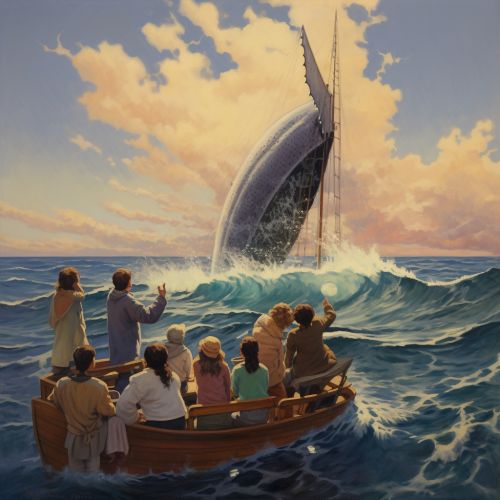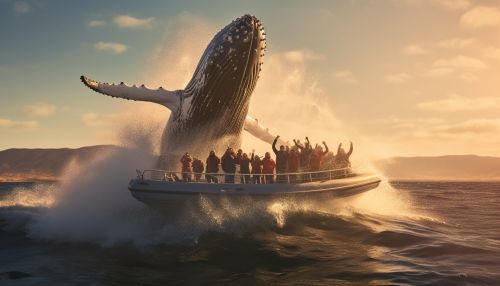Whale watching
Introduction
Whale watching is the practice of observing whales and dolphins (cetaceans) in their natural habitat. Whale watching is mostly a recreational activity (ecotourism), but it can also serve scientific and/or educational purposes. A part of the marine wildlife tourism, whale watching generates billions of dollars a year worldwide, which benefits the local communities.


History
The first organized whale watching in the United States began in 1950 off the San Diego coast, with the primary objective of entertaining the public and generating revenue. Over the years, the focus of whale watching has shifted towards education and awareness about the conservation of marine life.
Types of Whale Watching
There are two main types of whale watching: land-based and boat-based. Land-based whale watching is often done from cliffs or the shoreline, while boat-based whale watching involves travelling out to sea on a boat to observe whales.
Land-Based Whale Watching
Land-based whale watching is a popular choice for those who prefer not to travel by boat. It is also a more sustainable and less intrusive way to observe whales. Some of the best places for land-based whale watching include the coasts of California, South Africa, and Australia.
Boat-Based Whale Watching
Boat-based whale watching allows for closer encounters with whales. However, it also has a greater potential to disturb the animals. Guidelines and regulations have been established in many countries to minimize the impact of boat-based whale watching on whales.
Whale Species Commonly Observed
There are several species of whales commonly observed during whale watching tours. These include the humpback whale (Megaptera novaeangliae), the blue whale (Balaenoptera musculus), and the orca, or killer whale (Orcinus orca).
Humpback Whales
Humpback whales are known for their acrobatic breaching behavior, making them a favorite among whale watchers. They are found in oceans and seas around the world and are known to migrate up to 25,000 km each year.
Blue Whales
Blue whales are the largest animals ever known to have lived on Earth. These magnificent marine mammals rule the oceans at up to 100 feet long and upwards of 200 tons.
Orcas
Orcas, or killer whales, are the largest of the dolphins and one of the world's most powerful predators. They are easily recognizable by their distinctive black-and-white coloring.
Impact on Whales
While whale watching can have educational and conservation benefits, it can also have negative impacts on the whales being observed. These impacts can include changes in behavior, displacement from feeding areas, and stress.
Regulations and Guidelines
Many countries have regulations and guidelines in place to minimize the impact of whale watching on whales. These often include rules about the distance boats must keep from whales, the speed at which they can approach whales, and prohibitions on chasing or harassing whales.
Economic Impact
Whale watching is a significant part of the tourism industry in many countries. It generates billions of dollars in revenue each year, which supports local economies and contributes to conservation efforts.
Future of Whale Watching
The future of whale watching depends on our ability to balance the demand for these experiences with the need to protect whales and their habitats. This will require ongoing research, effective regulation, and a commitment to sustainable practices.
